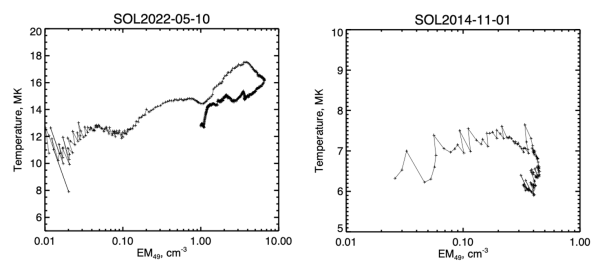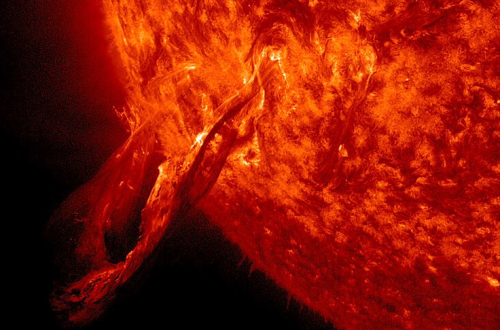Is there HOPE for Hyder flares...
| Nugget | |
|---|---|
| Number: | 468 |
| 1st Author: | Hugh HUDSON |
| 2nd Author: | |
| Published: | March 18, 2024 |
| Next Nugget: | TBD |
| Previous Nugget: | Sun-as-a-star Analysis of the M8.7 Flare on 2022 October 2 Using H-alpha and EUV Spectra Taken by SMART/SDDI and SDO/EVE |
Introduction
As related in an earlier Nugget, we now have a robust way to anticipate the occurrence of a solar flare, by up to tens of minutes (Ref. [1]). This capability comes from the recognition of the "Hot Onset Precursor Event" (HOPE) property. Needless to say, foreknowledge of the imminent occurrence of a flare is great news for campaign-style observations aimed at solar flares, since observers may not need to waste so much telescope time just waiting in vain.
Does HOPE occur in all flares? Different kinds of flares arguably do exist -- notably, eruptive flares clearly differ from confined flares. A "Hyder flare", probably better described as a "filament eruption" or disparition brusque quite noticeable from day-on-day observations in the chromospheric Fraunhofer line H&\alpha;, when a filament will just mysteriously disappear. Figure 1 shows the Wikipedia example of a Hyder flare, SOL2014-11-01T05:34 (C3).
HOPE in flares and filament eruptions
The HOPE phenomenon is best recognized from a diagnostic diagram tracing out a flare's thermal X-ray emission. Figure 1 plots two of these diagrams, which show the evolution of isothermal temperature vs. emission measure. Generally this plot circulates in the clockwise sense, and the HOPE appears as a horizontal branch at rough fixed (hot) temperature while the emission measure rises steadily. In a major solar flare, plasma temperatures may rise to 15-10 MK, typically following the hard X-ray/microwave "impulsive phase".

Conclusion
We find that filament-eruption events also show HOPE. What does it mean? As yet there is no theoretical or modeling counterpart to this obviously important phase of a flare - it is important enough that one can reliably anticipate flare occurrence. It seems likely that the HOPE represents the fundamental flare instability, and that the impulsive phase, particle acceleration, CME and CSHKP phenomena are secondary effects and actually optional.
So, yes there is HOPE, but there is no need for a separate category of Hyder flares.
